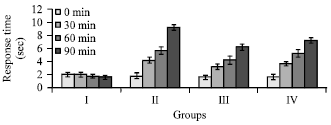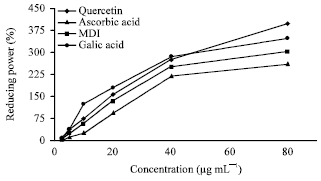Research Article
Antinociceptive and Antioxidant Activities of the Dillenia indica Bark
Department of Pharmacy, Atish Dipankar University of Science and Technology, Dhaka, Bangladesh
M. Saifur Rahman
Department of Pharmacy, Atish Dipankar University of Science and Technology, Dhaka, Bangladesh
M. Hasan
Department of Pharmacy, Atish Dipankar University of Science and Technology, Dhaka, Bangladesh
M. Maruf Khan
Department of Pharmacy, Atish Dipankar University of Science and Technology, Dhaka, Bangladesh
Kamrun Nahar
Department of Pharmacy, Atish Dipankar University of Science and Technology, Dhaka, Bangladesh
Sheema Sultana
Department of Pharmacy, Atish Dipankar University of Science and Technology, Dhaka, Bangladesh














